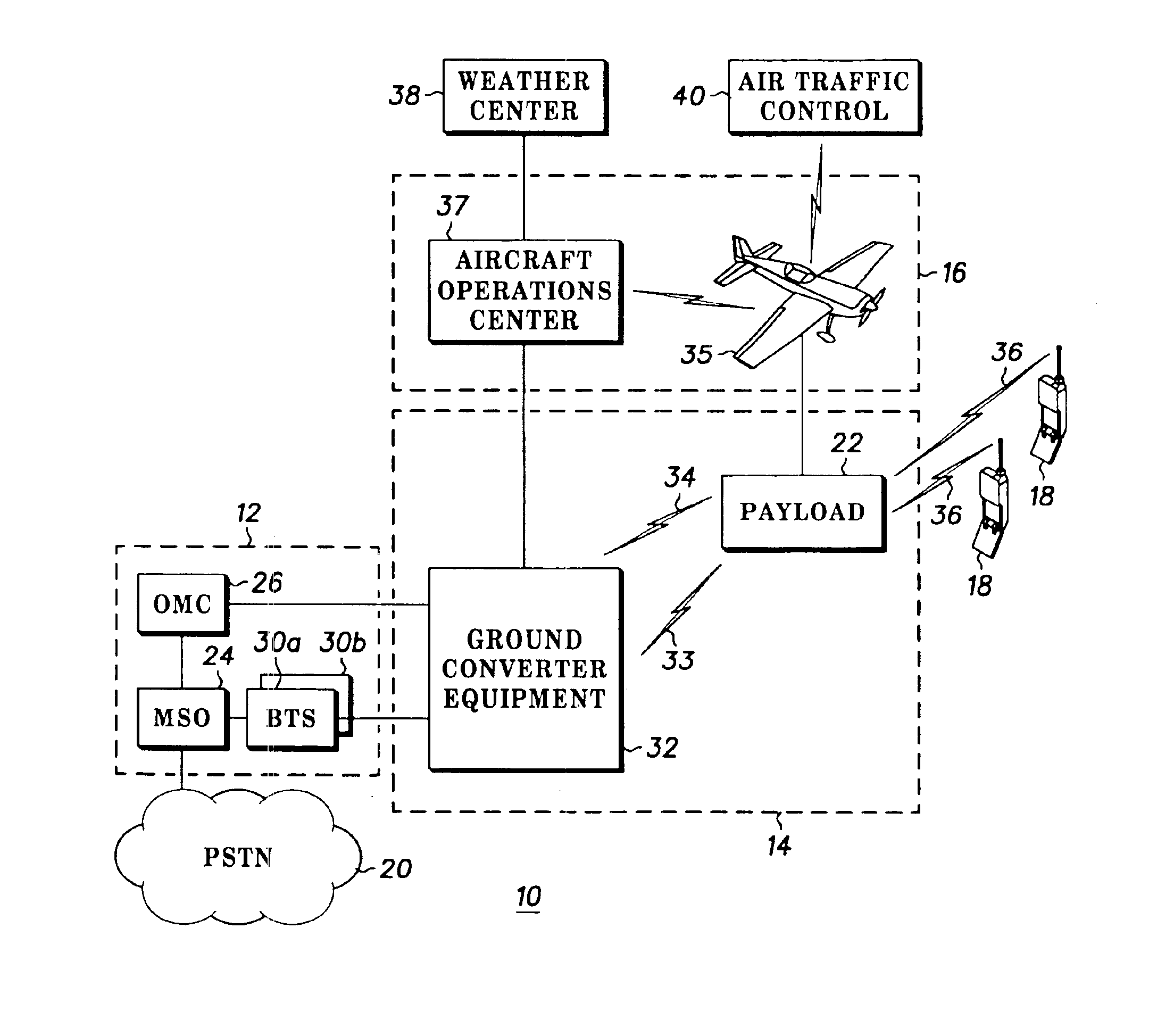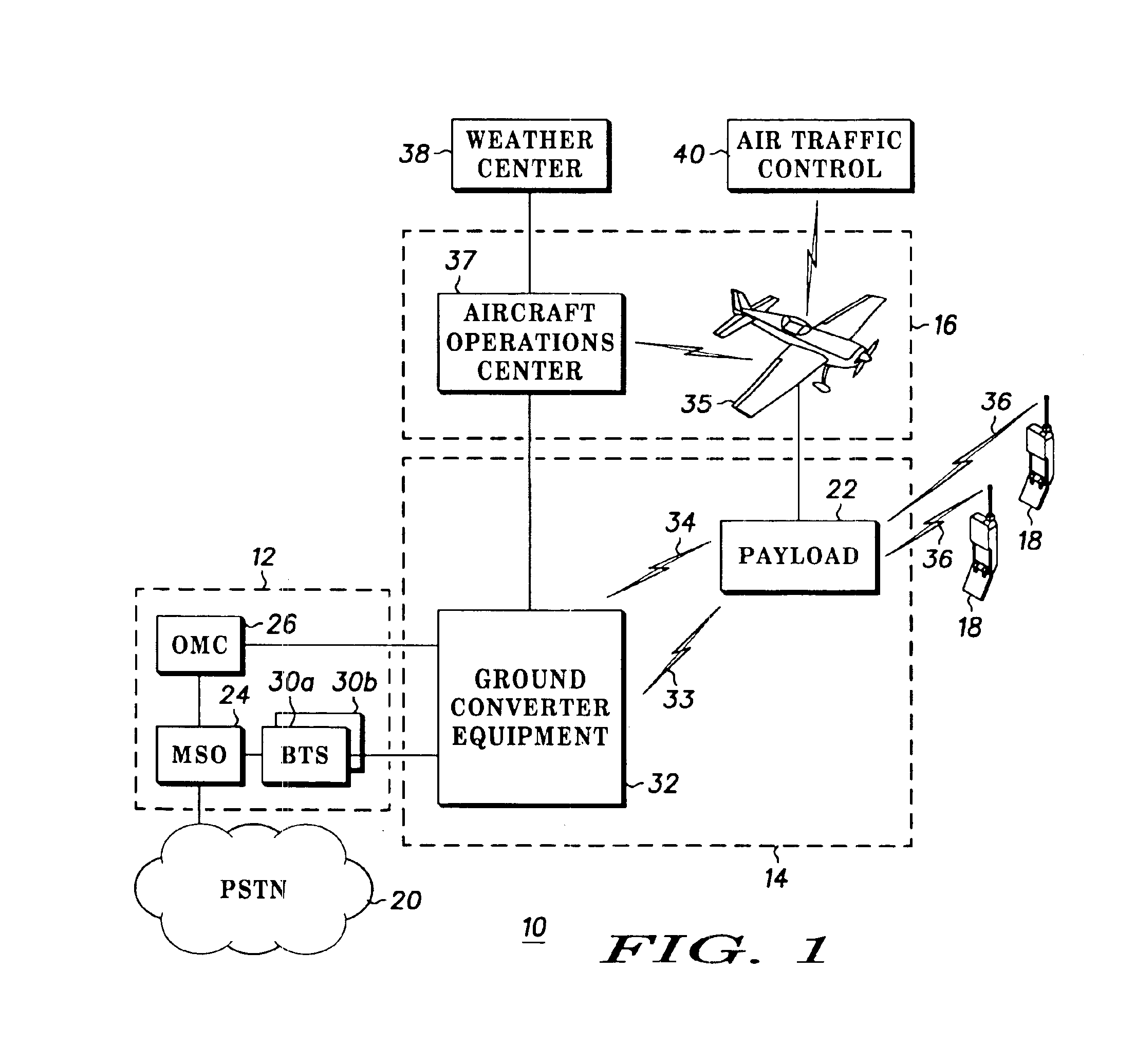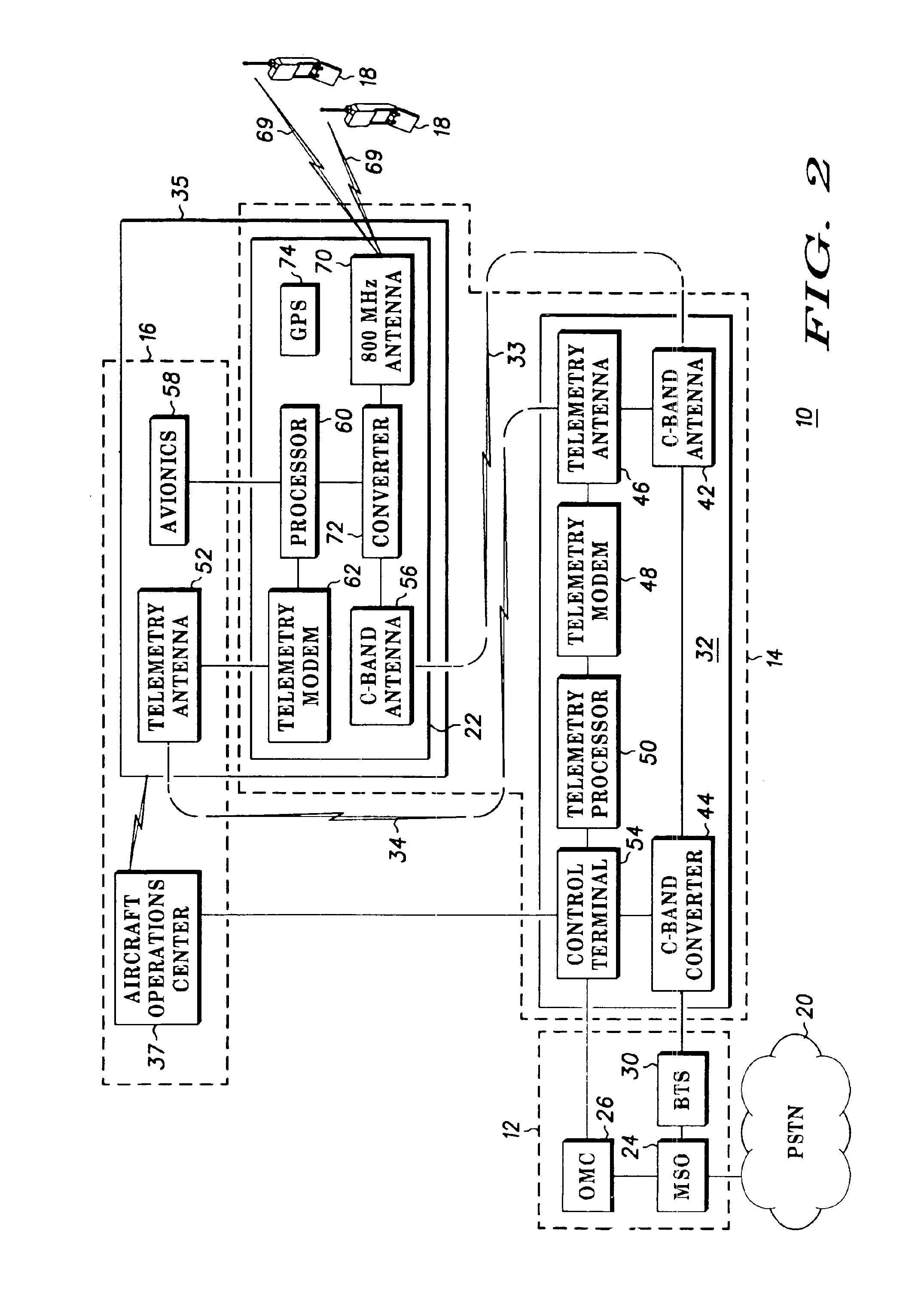Method for maintaining candidate handoff list for airborne cellular system
a cellular system and candidate handoff technology, applied in the field of wireless communications systems, can solve the problems of limited service or no wireless service at all, the buildout rate of terrestrial base stations is typically slow and expensive, and the number of wireless communications base stations to handle calls during both off-peak and peak times cannot be adequately handled temporarily
- Summary
- Abstract
- Description
- Claims
- Application Information
AI Technical Summary
Problems solved by technology
Method used
Image
Examples
Embodiment Construction
Referring now to the drawings in which like numerals reference like parts, FIG. 1 shows an airborne cellular communications system 10. The system 10 generally includes three primary segments: a cellular infrastructure segment 12, a radio infrastructure segment 14, and an airplane segment 16. These three segments in combination are capable of providing cellular communications coverage to a large geographical area by enabling system users, represented generally by handsets 18, to link to a public switched telephone network (PSTN) 20 via an airplane payload 22 including a repeater. The structure and function of each of these three system segments will be discussed in detail.
The cellular infrastructure segment 12 includes a mobile switching office (MSO) 24 that includes equipment, such as a telephony switch, voicemail and message service centers, and other conventional components necessary for cellular service. The MSO 24 connects to the PSTN 20 to send and receive telephone calls in a ...
PUM
 Login to View More
Login to View More Abstract
Description
Claims
Application Information
 Login to View More
Login to View More - R&D
- Intellectual Property
- Life Sciences
- Materials
- Tech Scout
- Unparalleled Data Quality
- Higher Quality Content
- 60% Fewer Hallucinations
Browse by: Latest US Patents, China's latest patents, Technical Efficacy Thesaurus, Application Domain, Technology Topic, Popular Technical Reports.
© 2025 PatSnap. All rights reserved.Legal|Privacy policy|Modern Slavery Act Transparency Statement|Sitemap|About US| Contact US: help@patsnap.com



